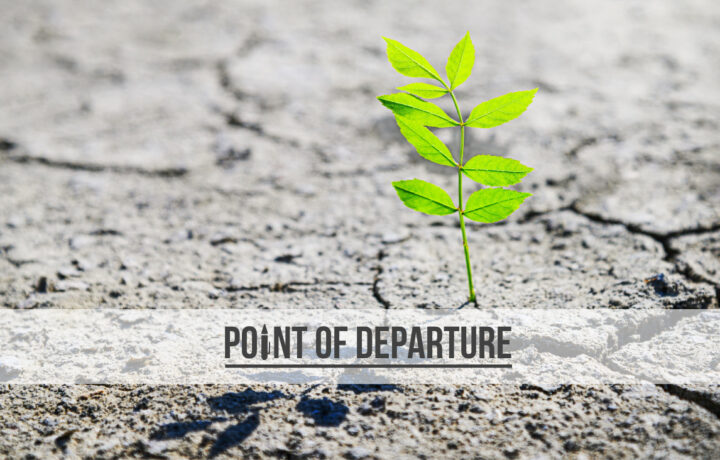“Life doesn’t get easier or more forgiving. We get stronger and more resilient.” – Steve Maraboli
Last week, I stood before a group of educational administrators from around the country, gathered to engage on one of my favorite topics: resilience. Truth be told, I almost didn’t make my own speaking engagement. A moving van backing into my cul-de-sac that morning broke down, essentially blocking my driveway. The moving crew wasn’t too interested in what they saw as my problem – Surprise! – and they thought I had “just enough” room to squeeze out of the driveway and around their truck.
I wasn’t so sure.
But if I’m anything, it’s resilient. I measured the distance from the truck to the curb. I measured the width of my month-old Ford Explorer. If I folded in the mirrors and kept one wheel on the curb – and off the automatic sprinklers in the yard – I should be able to get past the moving van with about six inches to spare.
It was more like three.
WHAT IS Resilience?
But I made it, and I managed to arrive at my destination early enough to take a deep sigh of relief and organize my thoughts for our discussion.
Resilience is one of the hottest topics of late. With people experiencing stress from all corners of their lives, it’s no surprise that they’re suffering. But when we talk resilience, we don’t always have a clear understanding of what the term even means. Like a lot of things, we can’t define it, but we’ll know it when we see it.
So, what is it?
Resilience is the ability to adapt well in the face of adversity, trauma, tragedy, threats, or significant sources of stress. The key term there is adapt, as in adapt and overcome. But there’s a little more to it. You also need grit, passion, and sustained persistence focused on long-term achievement. And perseverance, the secret sauce behind the sustained persistence required to overcome difficulties, failure, or opposition.
Words have meaning. When it comes to resilience, understanding not just what it means, but how it connects to – and is unique from – grit and perseverance is vital.
HOW MUCH IS TOO MUCH?
Resilience is a good thing, right? Definitely. But sometimes, too much of a good thing can set you back.
In a recent Inc. article, Jessica Stillman explored new research in the field of resilience and summarized results that may not be as surprising as you might think. While resilience, grit, and perseverance can put you on a path to long-term success, “white knuckle your way through adversity too often” and you might actually cause permanent damage to your brain.
“Constant stress is terrible for you physically,” she writes. “But it’s also hard on your brain.” Without a break from the stress, you essentially overwork certain parts of your brain. Eventually, this causes damage to the brain and actually makes it harder for you to learn new things or remember important ones.
“There is such a thing as too much resilience,” she continues. So, while resilience is vital to your ability overcome adversity, breaking from the stress is just as important. Find a hobby. Meditate. Do some goat yoga. Find ways to relax that help you regulate stress and reduce the strain on your brain.
THE BUILDING BLOCKS
At its foundation, resilience rests on five building blocks that help us as individuals and as organizations endure and manage stress, navigate the uncertainty and chaos of life, and maintain a proper sense of balance. Underpinning that foundation is deep sense of purpose and meaning, which provides direction and motivation in the midst of adversity.
Together, these building blocks provide a foundation for thriving – not just surviving – during difficult and challenging times. By understanding, exploring, and developing each of the blocks, we can forge the strength, adaptability, and perseverance to face down whatever life throws our way.
1. Self-Awareness.
Getting inside your own head is where it all begins. Recognizing your own strengths, weaknesses, emotions, and stress indicators provides the impetus for adaptation.
2. Self-Regulation.
Keep calm and carry on is more than an old internet meme (which actually predates the internet). It’s a way of life. When combined with a strong sense of purpose, it is far easier to regulate emotions and remain focused.
3. Mental Agility.
A growth mindset is essential to reframing challenges and generating creative solutions to problems. That mindset allows you find an anchor in adversity and view failure as an opportunity to grow.
4. Social connectivity.
Social connectivity is a key to our ability to learn and adapt in the face of adversity. That begins with strong relationships and networks built on mutual trust and support, which enhance communication and collaboration. That connective tissue binds us to others and strengthens our resilience.
5. Perpetual optimism.
Colin Powell’s 13th rule of leadership is probably the most important: “Perpetual optimism is a force multiplier.” It’s not complicated. There’s a silver lining in every cloud. You might just need to look a little harder to find it.
Finally, the Center for Creative Leadership offers a three-step approach to maintaining your resilience, essentially the Three As of resilience: Anticipate (keep your thumb on the pulse of your environment and prepare to act on challenges and opportunities); Adapt (approach challenges decisively in new and different ways); and Assess (reflect on experiences to learn, evolve, and grow). Stay one step ahead of life’s challenges; don’t wait for them to T-bone you in the intersection of life.




